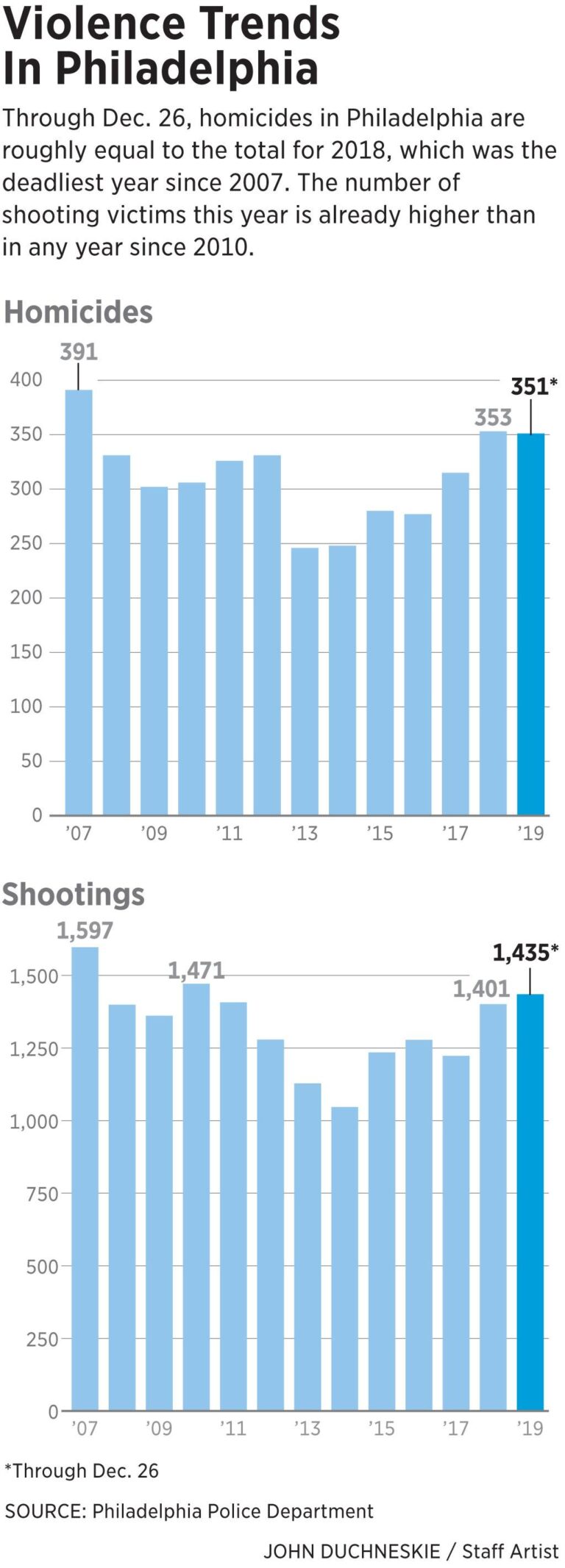Philadelphia Achieves Historic Reduction in Homicide Rates Through Collaborative Community and Policing Efforts
Unprecedented Drop in PhiladelphiaŌĆÖs Homicide Numbers: A Community-Driven Success
Philadelphia has recently experienced a remarkable decrease in its homicide rate, reaching levels not seen in several decades. This achievement stems from a comprehensive strategy that blends enhanced law enforcement tactics, active community participation, and targeted social programs. City leaders emphasize the vital role of neighborhood groups that have diligently worked to resolve disputes and foster safer environments. Key elements of this collective effort include:
- Strengthened community involvement through neighborhood watch initiatives and local cultural events
- Expanded programs for youth providing mentorship, educational support, and extracurricular activities
- Focused resource deployment prioritizing areas with elevated risk while bolstering social support services
- Adoption of advanced technology such as predictive crime analytics and improved communication systems for police
This positive shift is evident not only in statistical data but also in the renewed optimism among PhiladelphiaŌĆÖs residents. The table below illustrates the downward trend in homicides over recent years:
| Year | Number of Homicides | Year-over-Year Change |
|---|---|---|
| 2021 | 562 | ŌĆö |
| 2022 | 482 | -14.2% |
| 2023 | 393 | -18.4% |
Dissecting the Drivers Behind PhiladelphiaŌĆÖs Decline in Violent Crime
The reduction in violent crime across Philadelphia is the result of multiple interrelated factors. A cornerstone has been the expansion of community policing, which has cultivated stronger bonds between officers and residents, fostering mutual trust and cooperation. This relationship encourages citizens to actively participate in crime prevention by reporting suspicious activities early. Complementing this, intervention programs aimed at vulnerable youth have successfully diverted many from criminal pathways by offering alternatives such as vocational training, academic support, and mentorship.
Economic improvements in several neighborhoods have also contributed significantly. As employment opportunities have grown, the socioeconomic pressures that often lead to violence have lessened. Furthermore, the integration of cutting-edge technologyŌĆöranging from enhanced surveillance cameras to sophisticated crime data analyticsŌĆöhas empowered law enforcement to anticipate and respond to threats more effectively. The following factors have been instrumental in this progress:
- Investment in affordable housing and neighborhood revitalization
- Expanded conflict mediation and community outreach programs
- Improved collaboration between social service agencies and criminal justice systems
- Targeted efforts to curb the illegal flow of firearms
| Factor | Effect |
|---|---|
| Community Policing | Reduced violent incidents through enhanced cooperation |
| Youth Intervention Programs | Lowered gang involvement and school-related violence |
| Economic Development | Decreased crime linked to improved employment rates |
| Data-Driven Policing | Faster response and focused enforcement actions |
Law Enforcement Innovations Pivotal to Sustaining Reduced Homicide Rates
The ongoing decline in PhiladelphiaŌĆÖs homicide figures is largely credited to a strategic transformation in policing methods. Authorities have embraced intelligence-led policing, concentrating efforts on neighborhoods with the highest crime rates and habitual offenders. This proactive stance enables the disruption of violent activities before they escalate. Simultaneously, bolstered community policing has strengthened trust between officers and residents, leading to increased community cooperation and valuable intelligence sharing.
Core components of this approach include:
- Targeted deterrence programs aimed at repeat offenders
- Utilization of data analytics to identify crime trends and hotspots
- Partnerships with social service organizations to tackle underlying social issues
- Enhanced foot patrols and community engagement initiatives
| Strategy | Focus Area | Outcomes |
|---|---|---|
| Intelligence-Led Policing | Concentrated enforcement | 30% decrease in violent crime hotspots |
| Community Policing | Building resident trust | 40% increase in community-sourced tips |
| Social Intervention Collaborations | Reducing recidivism | 20% drop in repeat offenses |
Strategic Policy Recommendations to Enhance and Sustain Public Safety in Philadelphia
To maintain and further the gains in reducing homicide rates, PhiladelphiaŌĆÖs policymakers should emphasize the expansion of community-based policing that nurtures trust and cooperation between law enforcement and residents. Implementing culturally sensitive training for officers and increasing patrol presence in vulnerable neighborhoods can strengthen deterrence and community relations. Additionally, scaling up youth engagement initiatives and social support services is essential to address the root causes of violence, including poverty, educational disparities, and unemployment.
Optimizing resource allocation through a coordinated multi-agency task forceŌĆöcomprising the Philadelphia Police Department, mental health professionals, and nonprofit organizationsŌĆöcan enhance response efficiency and service delivery. Incorporating advanced data analytics for crime prevention will allow for more precise targeting of high-risk areas and repeat offenders. The table below summarizes key policy proposals, their anticipated benefits, and suggested timelines for implementation:
| Policy Initiative | Projected Impact | Estimated Timeline |
|---|---|---|
| Expansion of Community-Based Policing | Strengthened trust and reduced violent crime | 6 to 12 months |
| Enhanced Youth Engagement and Education | Lower youth crime rates and sustainable prevention | 12 to 18 months |
| Multi-Agency Coordination Task Force | Improved resource sharing and response times | 3 to 6 months |
| Implementation of Data-Driven Crime Analysis Tools | More effective and targeted policing | 6 months |
Conclusion: Sustaining PhiladelphiaŌĆÖs Path Toward Safer Communities
As Philadelphia celebrates its lowest homicide rate in decades, the combined efforts of law enforcement, community organizations, and social programs demonstrate promising progress in public safety. While challenges persist, this significant reduction offers hope and a blueprint for continued improvement. Ongoing commitment, strategic investment, and community collaboration will be essential to preserving this momentum and ensuring Philadelphia remains a secure and thriving city for all its residents.








